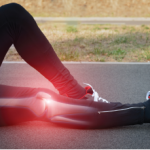WASHINGTON, D.C.—Knee osteoarthritis–related disability is a significant public health priority in the United States; it affects half of all adults over 65 years of age and leads to over 700,000 total knee replacement (TKR) procedures each year, making it the most common and costly inpatient procedure in Medicare, according to Patricia D. Franklin, MD, professor and director of clinical and outcomes research in the department of orthopedics and physical rehabilitation at the University of Massachusetts Medical School in Worcester. Although TKR has shown efficacy in improving pain, one word can describe current functional outcomes as well as postoperative rehabilitation strategies after TKR: variable.
Given this procedure’s burden on the U.S. healthcare system, efforts are underway to address variability in rehabilitation after TKR as well as patient factors associated with the variability in functional outcomes to improve both the management and outcomes of TKR. Dr. Franklin and other experts discussed this effort in a session titled, “Total Knee Arthroplasty Rehabilitation,” at the recent 2012 ACR/ARHP Annual Meeting, held here November 9–14. [Editor’s Note: This session was recorded and is available via ACR SessionSelect at www.rheumatology.org.]
Identifying Patients at Risk for Poor Functional Outcomes
About one-third of patients who undergo TKR do not experience improvement in physical function after surgery. Among the patient factors that have been shown to predict suboptimal function after TKR are older age, female sex, a body mass index greater than 40, poorer quadriceps strength, and poorer preoperative emotional health or physical function. Data also show that patients who undergo TKR also have evidence of symptomatic joint pain in multiple other joints as well, such as the hips, contralateral knee, and lumbar spine. According to Dr. Franklin, the evidence is building for the need to consider all of these factors when performing a TKR.
To that end, Dr. Franklin and her colleagues developed a research registry called FORCE-TJR (Function and Outcomes Research for Comparative Effectiveness in Total Joint Replacement) that uses patient-reported outcomes of pain relief and improved physical function to define clinical failure, rather than implant failure that is used by traditional TJR registries to define the need for surgical revision (www.force-tjr.org). The FORCE-TJR registry focuses on understanding the contribution of patient factors (e.g., age, sex, race, obesity, medical and musculoskeletal comorbidity, preoperative functional status, and socioeconomic position), as well as delivery (e.g., perioperative pathway, institutional volume, postoperative adverse events, deep venous thrombosis) and technology (e.g., cemented/uncemented) factors to TJR outcomes.


